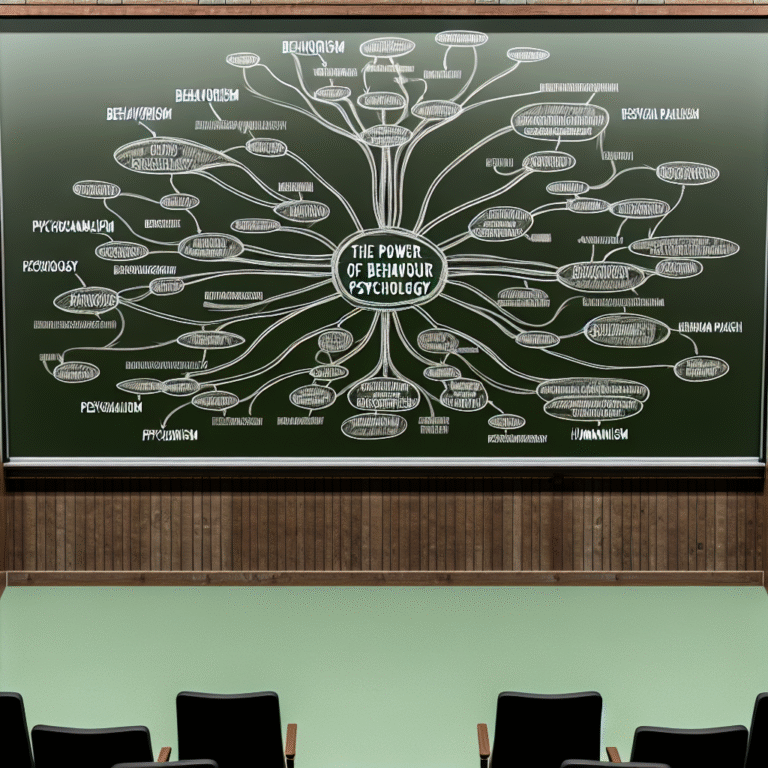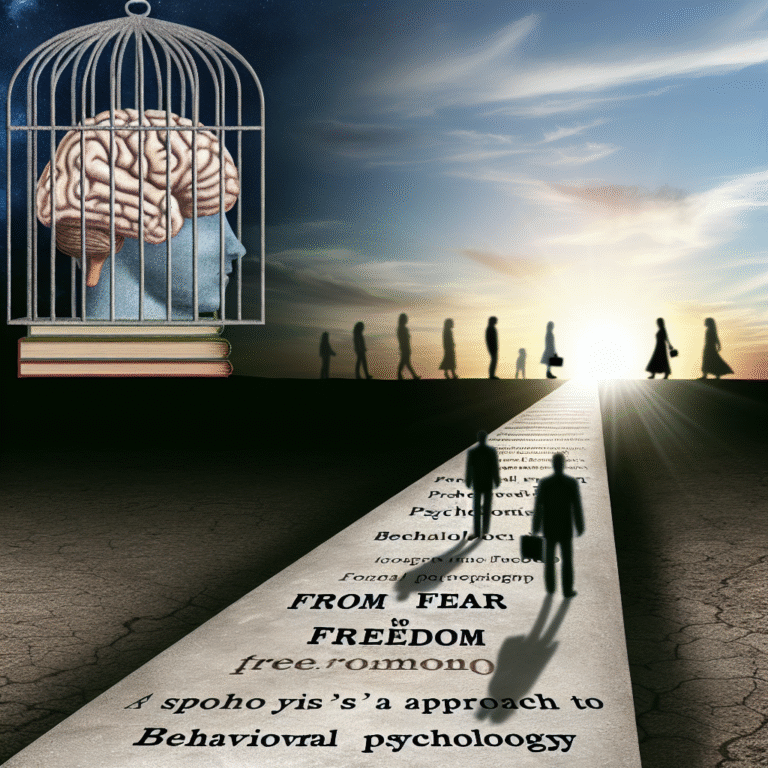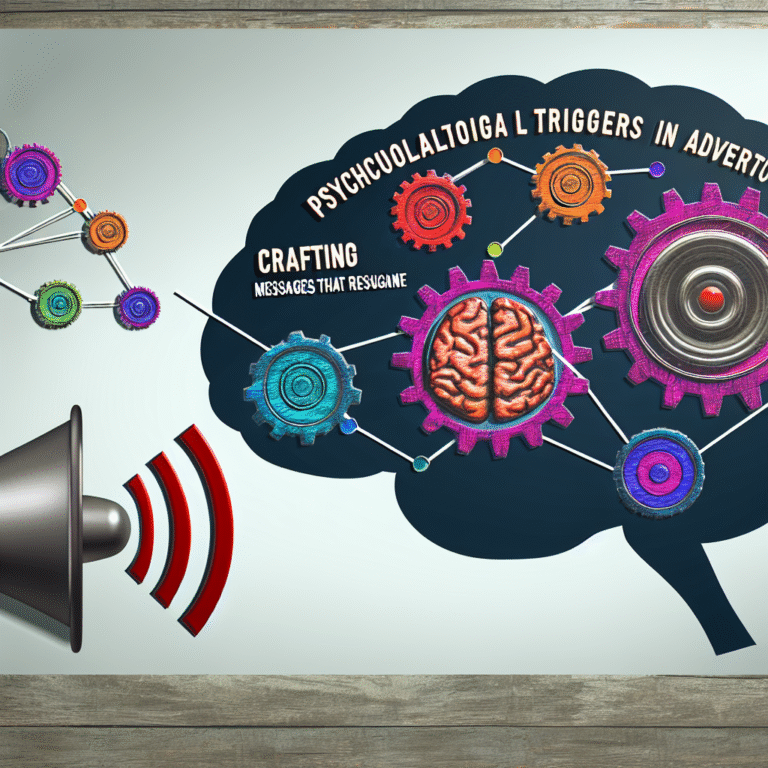
A Holistic Approach: Integrating Behavioral Psychology with Other Interventions for Autism
Introduction: The Power of a Holistic Perspective
Autism spectrum disorder (ASD) affects individuals and families in complex ways that extend beyond mere diagnostic criteria. While behavioral psychology has long been a cornerstone in the treatment of autism, emerging research and practice are increasingly advocating for a more holistic approach. This involves integrating behavioral psychology with a range of other therapeutic interventions, including occupational therapy, speech therapy, and even mindfulness practices. This article explores A Holistic Approach: Integrating Behavioral Psychology with Other Interventions for Autism not only as a theoretical concept but also as a practical framework that speaks to the needs of the individual.
The importance of this approach cannot be understated. It acknowledges that an individual with autism is not just a collection of symptoms to be managed but a whole person with unique needs, strengths, and backgrounds. By weaving together various interventions, we can create a richer, more nuanced support system that promotes the overall well-being of individuals on the spectrum. Let’s delve deeper into how this holistic approach is implemented, its effectiveness, and the future of autism support through interdisciplinary collaboration.
Understanding Autism Spectrum Disorder
What Is Autism?
Autism Spectrum Disorder is characterized by a range of challenges in social skills, repetitive behaviors, and communication. The term "spectrum" reflects the wide range of symptoms and severity that individuals may experience. According to the CDC, autism affects about 1 in 54 children in the United States, making it more critical than ever to provide effective support.
The Role of Behavioral Psychology
Behavioral psychology, particularly applied behavior analysis (ABA), has been the most researched and widely used intervention for autism. This method focuses on modifying behaviors through reinforcement strategies and systematic teaching, encouraging desirable behaviors and reducing negative ones. While it has shown effectiveness, there is growing recognition that behavioral psychology alone may not address the holistic needs of individuals with autism.
The Need for a Holistic Approach
Limitations of Traditional Interventions
Narrow Focus: Traditional behavioral approaches can lead to overly narrow interpretations of progress, sometimes neglecting emotional or social dimensions.
Lack of Personalization: One-size-fits-all methods often fail to consider the diversity of experiences among individuals on the spectrum.
- Neglect of Co-Occurring Conditions: Many autistic individuals may also face mental health issues or other neurodevelopmental disorders, further complicating their needs.
Benefits of a Holistic Approach
Adopting A Holistic Approach: Integrating Behavioral Psychology with Other Interventions for Autism provides several advantages:
Comprehensive Support: A holistic approach incorporates emotional, sensory, social, and cognitive elements, ensuring that interventions address all facets of a person’s identity.
Individualized Treatment: Professionals can tailor plans to fit each person’s unique circumstances, preferences, and family dynamics.
- Strengths-Based Perspective: Instead of focusing solely on deficits, a holistic approach emphasizes the strengths and potential of each individual, fostering empowerment.
Key Components of a Holistic Approach
1. Collaboration Across Disciplines
Collaboration between experts in behavioral psychology, occupational therapy, speech therapy, and nutrition can create a cohesive treatment plan. Regular team meetings can ensure that all professionals are aligned in their goals for the individual.
Case Study: Emily’s Journey
Emily, a 7-year-old with ASD, initially spent her therapy hours solely in ABA. After switching to a multidisciplinary approach, which included an occupational therapist who focused on sensory integration and a speech therapist to enhance her communication skills, Emily made significant gains. She became more engaged in social settings and could articulate her feelings more effectively.
Analysis: This case exemplifies how collaboration can enhance outcomes by addressing various developmental needs simultaneously.
2. Emphasizing Emotional Regulation
Integrating emotional regulation practices can dramatically improve social interactions and overall quality of life. Techniques such as mindfulness, cognitive-behavioral therapy (CBT), and relaxation techniques can be harmoniously blended into an autism intervention strategy.
Data Table: Emotional Regulation Benefits
| Intervention | Emotional Regulation Outcomes |
|---|---|
| Mindfulness Training | Reduced anxiety, improved focus |
| Social Skills Groups | Enhanced peer interactions |
| CBT | Better coping mechanisms |
3. Incorporating Family Support
A holistic approach also prioritizes the family as a key element in the intervention strategy. Family training, resources, and therapeutic support can empower families to better support their loved ones.
4. Nutrition and Wellness
Emerging research suggests that diet can have effects on behavior and cognition. Collaborating with nutritionists can guide families on dietary choices that may support overall well-being.
Integrating Strategies: Real-World Applications
Therapy Models for Holistic Integration
The Developmental, Individual Difference, Relationship-Based (DIR) Model: This model emphasizes social, emotional, and intellectual growth, integrating various therapeutic interventions while focusing on the strengths of the child.
- Positive Behavior Interventions and Supports (PBIS): Rather than solely focusing on punishment for negative behaviors, PBIS creates supportive environments and teaches appropriate behaviors, which reflects a more holistic understanding of behavior management.
Case Study: Using the DIR Model
A 10-year-old named Michael exhibited severe anxiety in social situations. Implementing the DIR model allowed his team to integrate role-playing with emotional regulation strategies, enabling him to manage his anxiety and engage with peers more successfully.
Analysis: Michael’s case illustrates the effectiveness of holistic approaches in addressing the multifaceted challenges faced by children with autism.
Challenges in Implementing Holistic Approaches
Despite the benefits, several challenges can hinder the implementation of A Holistic Approach: Integrating Behavioral Psychology with Other Interventions for Autism:
Lack of Training: Many professionals are trained in only one discipline and may hesitate to collaborate with others.
Resource Allocation: Holistic approaches may require more time and resources, which can be limited within certain settings.
- Family Resistance: Families may be uncertain about the integration of multiple treatment strategies and require thorough education and reassurance.
Conclusion: A Vision for the Future
As we’ve explored, A Holistic Approach: Integrating Behavioral Psychology with Other Interventions for Autism offers a promising path for supporting individuals on the autism spectrum. By addressing the complete person—including emotional, sensory, and social needs—while leveraging the expertise of varied professionals, we can nurture a supportive environment where autistic individuals flourish.
Moving forward, it is crucial to advocate for training programs that emphasize interdisciplinary collaboration and holistic understandings of autism. Moreover, encouraging open lines of communication between families, educators, and clinicians can facilitate a shared vision that prioritizes the comprehensive care of individuals with autism.
Let us aspire to embrace this holistic framework, paving the way for a future where every individual on the spectrum is seen, heard, and empowered.
FAQs Section
1. What does a holistic approach to autism look like in practice?
A holistic approach incorporates multiple therapies and interventions tailored to the individual’s needs, focusing on emotional, social, and intellectual development, often through a team of diverse professionals.
2. How can families support the holistic approach?
Families can engage in family trainings, maintain open communication with therapy teams, and practice techniques learned in therapy at home to reinforce skills.
3. Is a holistic approach more effective than traditional interventions?
Research suggests that holistic approaches can lead to improved outcomes across various domains, but effectiveness can vary by individual.
4. How can I find professionals who utilize a holistic approach?
Seek out therapists and clinics that emphasize multidisciplinary teamwork. Look for credentials in ABA, occupational therapy, and other relevant fields.
5. Are there resources available for holistic autism interventions?
Yes, numerous organizations provide resources, workshops, and literature on holistic approaches, including autism advocacy groups, therapy centers, and university programs focusing on autism.
By bringing together diverse perspectives and expertise, A Holistic Approach: Integrating Behavioral Psychology with Other Interventions for Autism creates a multifaceted basis of support, benefiting those on the autism spectrum and their families in profound ways.














